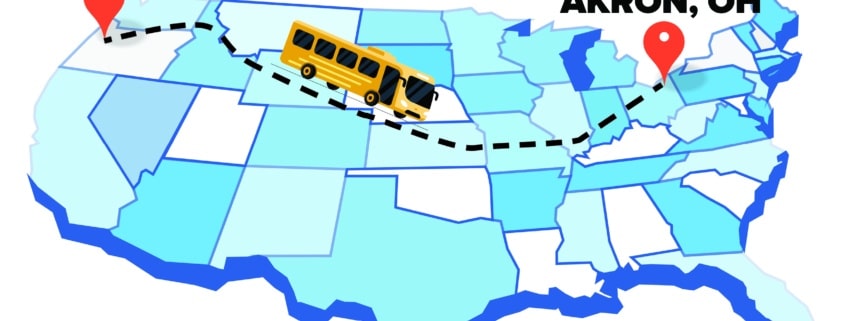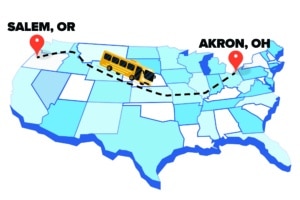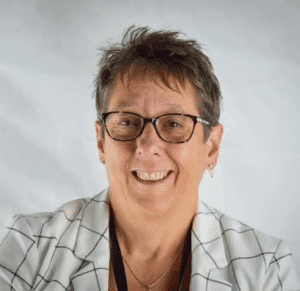What Salem Transit Can Learn from Akron, Ohio
Akron’s Metro Transit Ridership Soars 24% by Redirecting Existing Resources
Salem, Oregon and Akron, Ohio have a lot in common.
The Salem-Keizer area is home to about 207,000 residents, Akron about 190,000. Salem-Keizer’s geography consists of 56.8 square miles. Akron comes in at 61.9 square miles. Both run a transit district with operating revenues and expenses closely aligned. Both are committed to increasing ridership.
That’s where the divergence begins.
Salem-Keizer’s transit district, known commonly as Cherriots, is eyeing significant tax increases to achieve more ridership. Currently, Cherriots receives about $16 million per year through local property taxes and another $13 million per year from a statewide tax on workers’ wages, for $29 million in revenue from those sources.
Cherriots has said it wants to increase that total to $82 million a year, an increase of 280%. $13 million more will come from doubling the tax on workers’ wages in the Legislature’s transportation bill, which is expected to pass next week. Cherriots then intends to institute a new tax on payroll wages in Salem-Keizer for another $39 million a year.
The district says it is needed to improve services and increase utilization of the system.
Growth in Akron
Across the country, Akron’s transit district, METRO, was recently named the top mass transit district in the country. Last year, it grew ridership by 24% to 5.34 million rides per year from about 4.03 million the year before. That is triple the national average.
Salem stood at 3.5 million rides last year. In a telephone interview from her office in Akron, METRO CEO Dawn Distler told me their success came without any new revenue. “No one is going to give us any more money,” she laughed.
“We had to make really hard decisions. We did it from a business perspective. What are the routes doing the best and which ones are doing the worst? We decided to take our existing resources and put those resources where the most people were using the system. We increased frequency on the best routes to every 15 minutes.”
— Dawn Distler, METRO CEO
Distler acknowledged that those few riders using underperforming routes weren’t enthusiastic about the change. “We had some areas where we were doing about one and a half rides an hour on those routes. We decided that was not a good use of taxpayer dollars,” she said.
Those routes were eliminated and buses redirected to provide greater frequency on higher use routes. But for every rider disappointed in the change, six or seven new riders are now using the system. And those outlying areas were not deserted — they were just reinvented.
Creative Solutions
“We created three zones outside our prime service area, and if you are in an area off a bus line, we provide point-to-point service within that zone,” Distler said. “People can call for a ride on our app and for $5 they can go from their home right to their destination.”
Distler said those individuals can then hop on a bus and ride to other destinations without an additional fare. Once finished for the day they can ride back into their zone and receive a point-to-point ride for another $5.
“It is cheaper than Uber,” Distler said, adding they try to aggregate multiple riders within a zone to further enhance the revenue value. “But if only one calls, we will still get them where they want to go when they need to get there.”
Distler also noted It is still far cheaper than operating an empty bus most of the day and is a better service since it is on demand.
Making Connections
Akron’s Grocery Bus has also been an important contributor to ridership.
“We identified a few large-scale apartment complexes, many are senior living, and run an established time a couple days a week and take them to larger shopping complexes where they can do multiple things like get prescriptions, dry cleaning or the post office,” Distler said. “We also market to the neighborhoods in those areas what the schedule is and they can come and take the bus as well. We pick up 8-10 people at each stop and it makes good use of the bus capacity that way.”
As a side benefit, it also helps planning staff identify food deserts so they can plan additional service when justified by the numbers.
National Recognition
Akron’s approach has been so impressive that Distler and METRO were featured last week on the CBS Evening News segment: “Eye on America.”
The Akron CEO says the district will continue to innovate, embracing new technologies to enhance service and reduce costs. Doing it all by just playing the cards they have. And producing a playbook that others may wish to follow.




